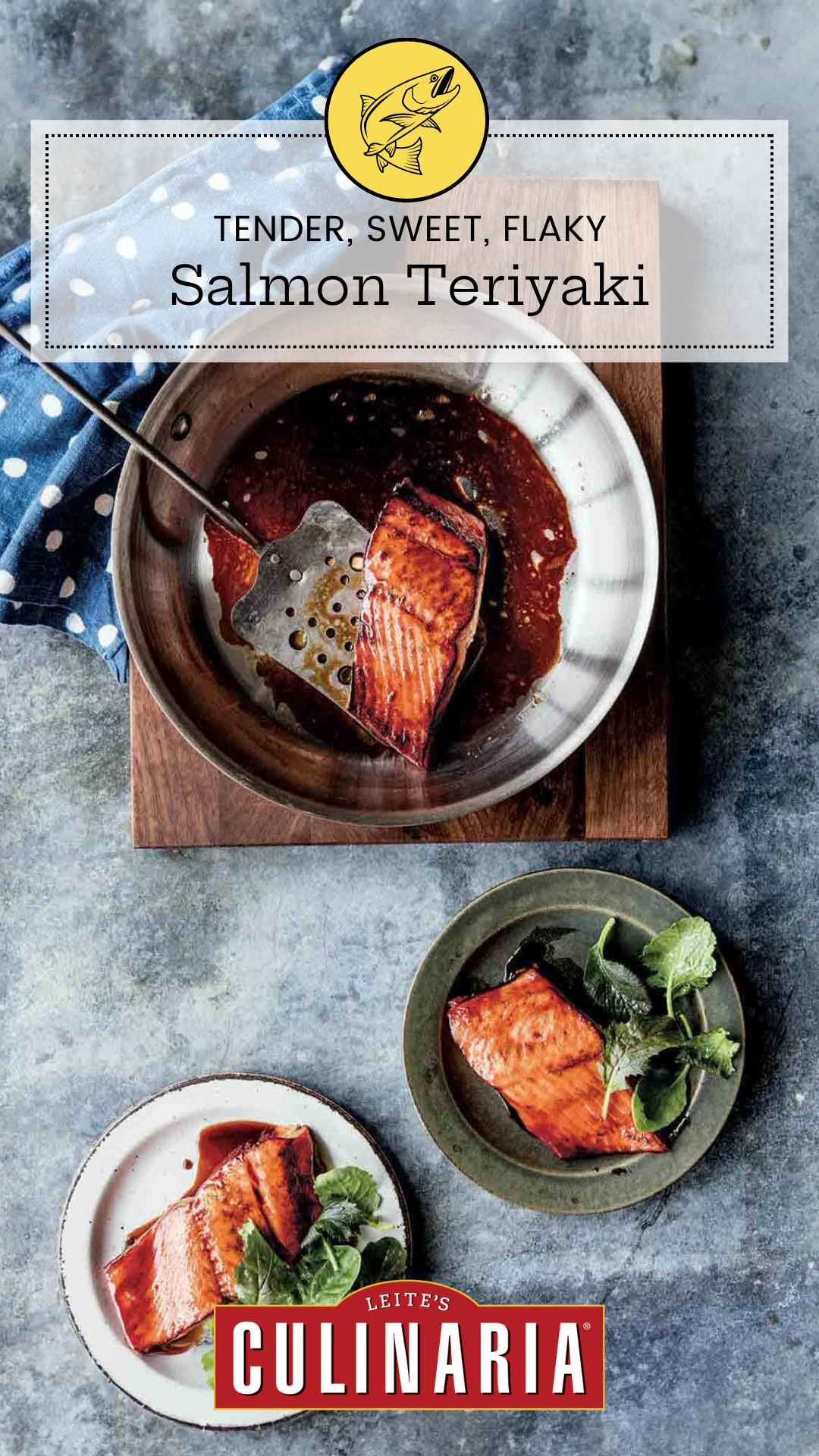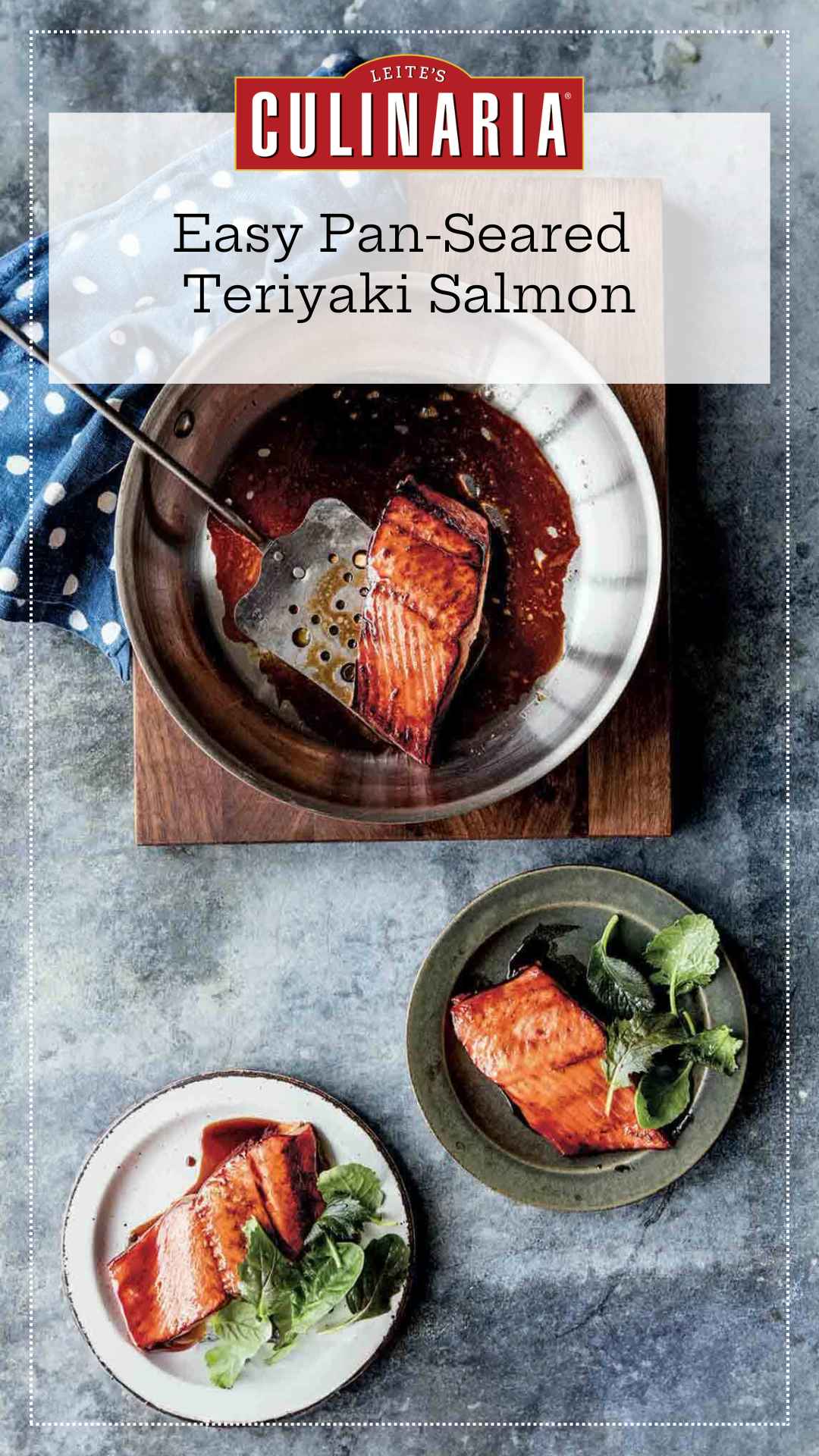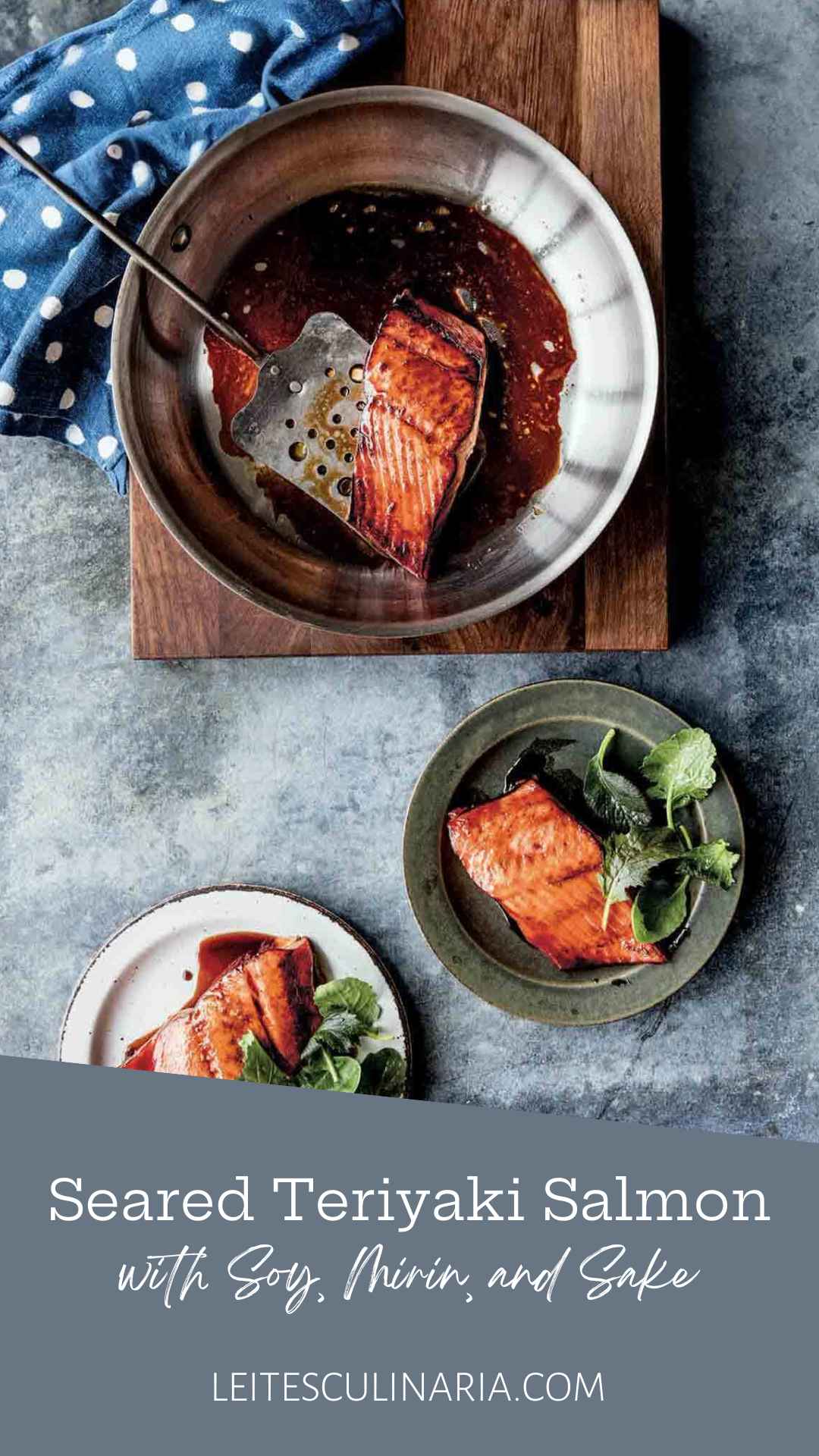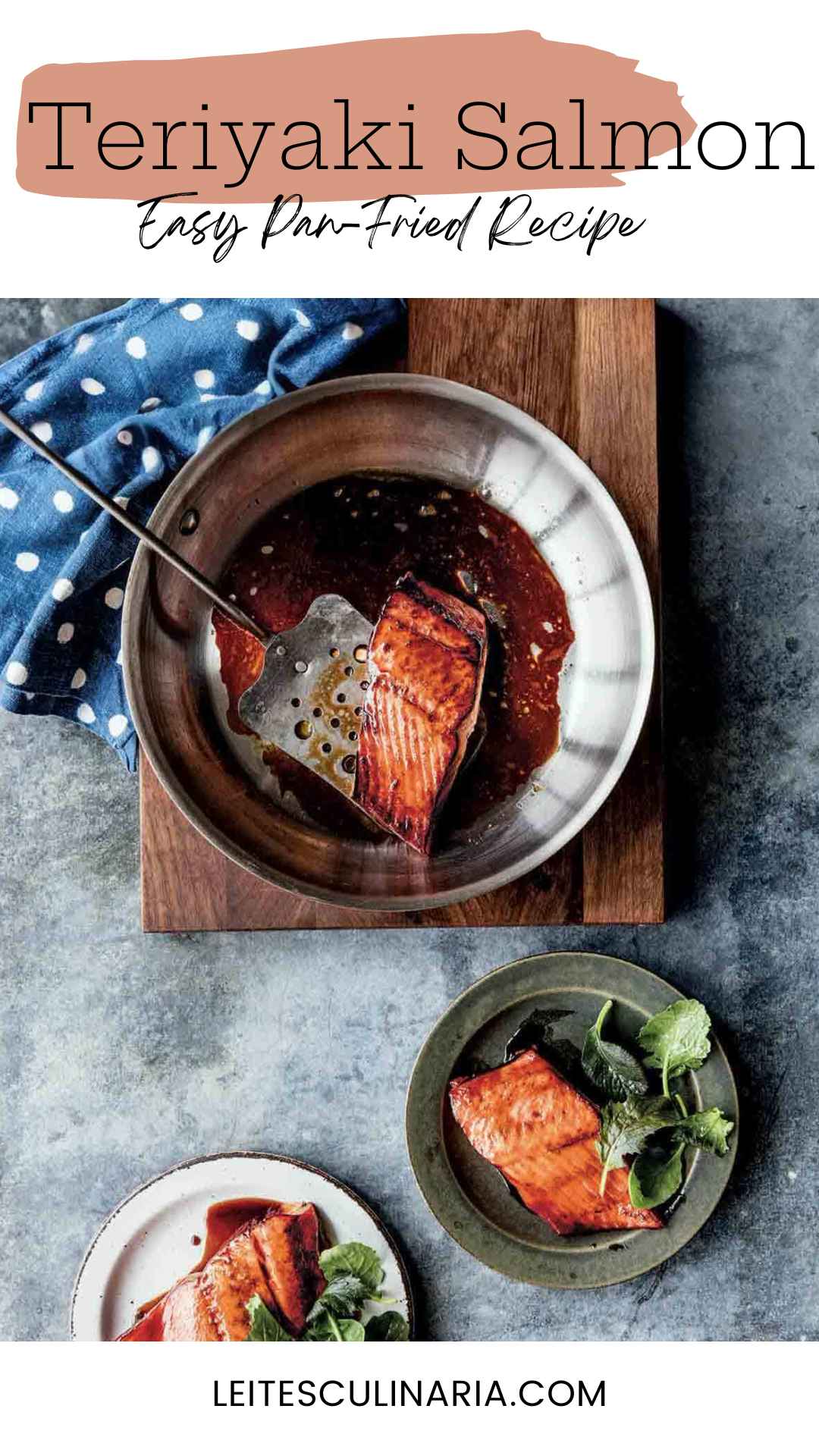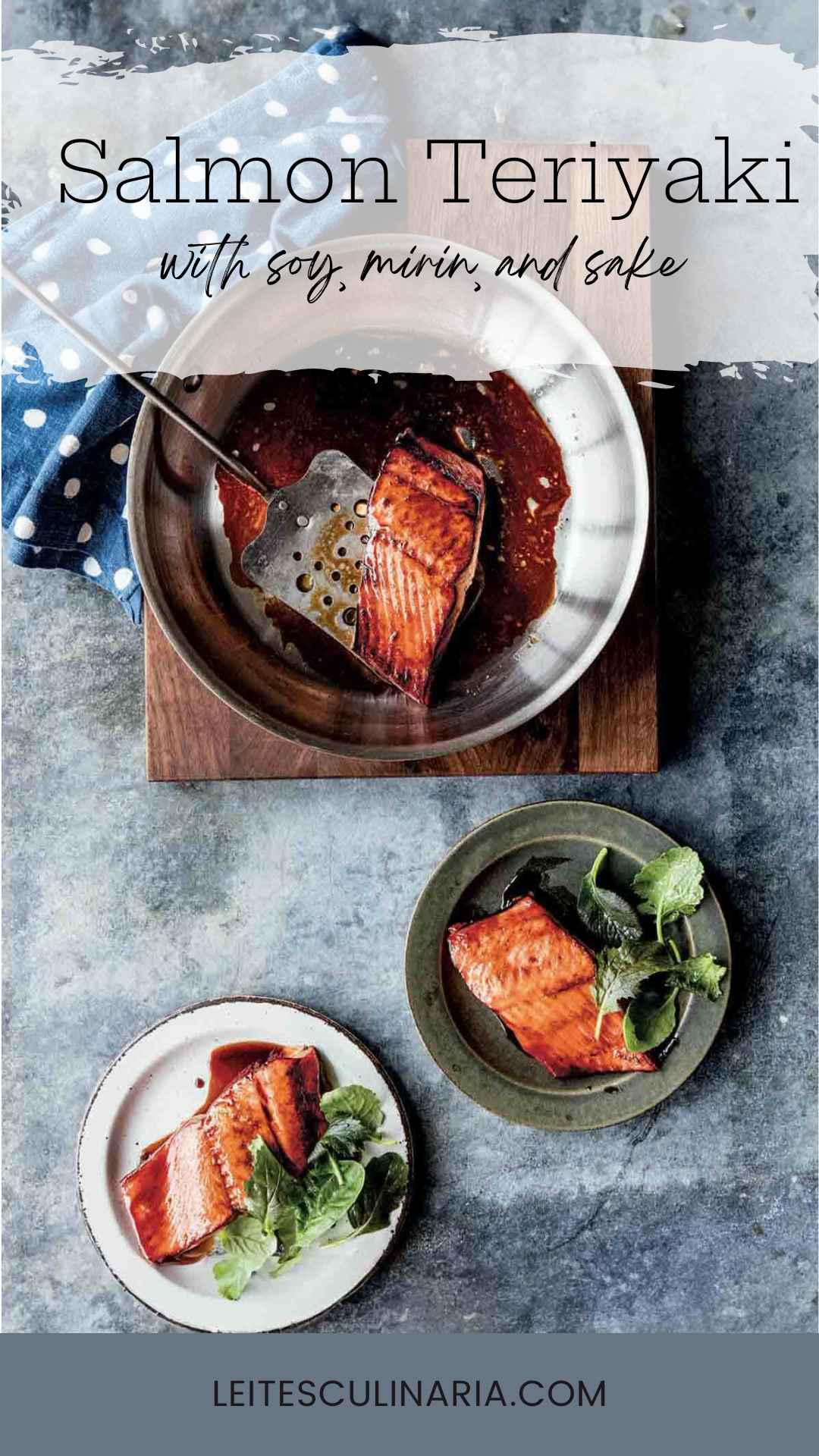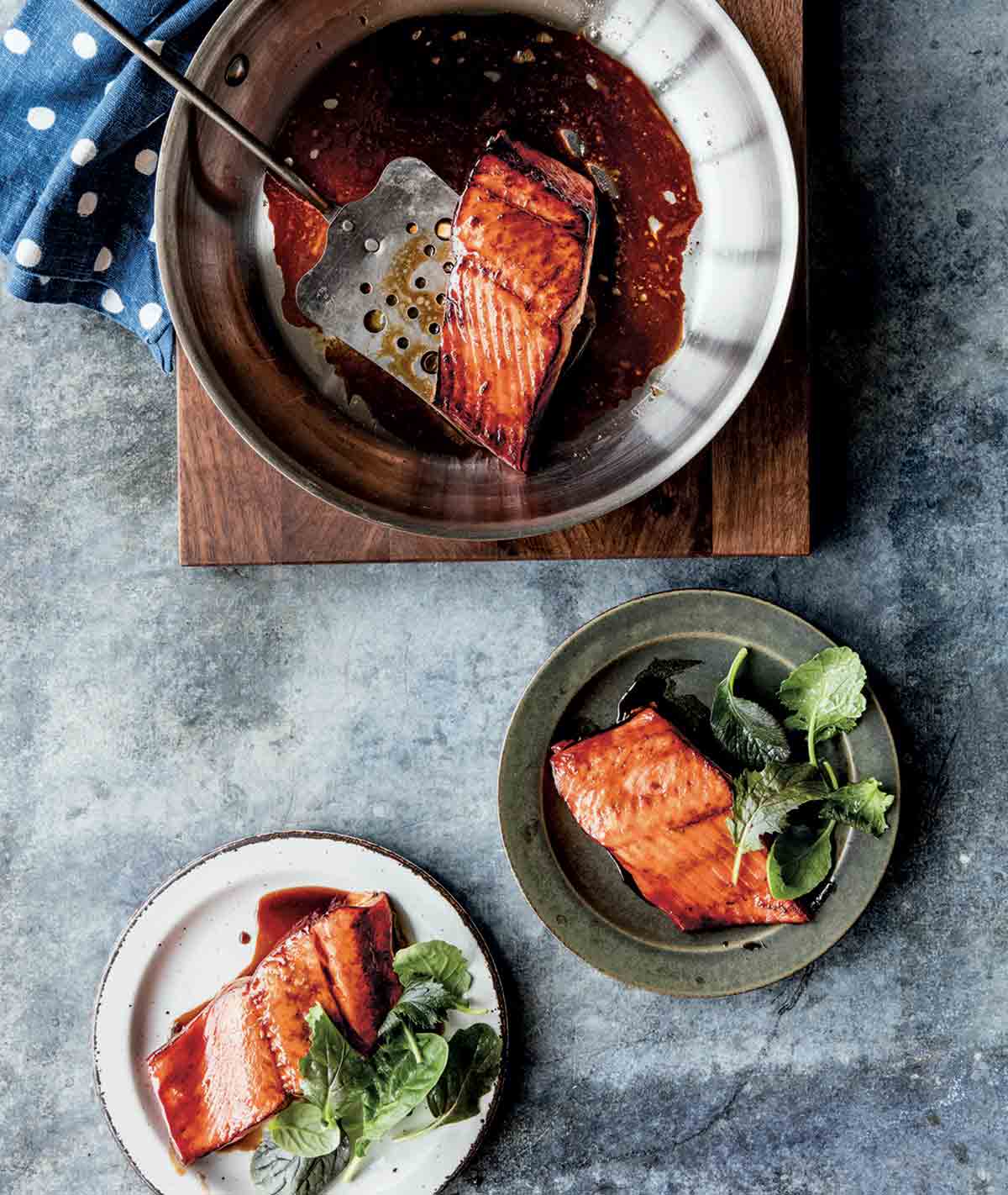
Salmon teriyaki—actually, anything teriyaki—is based on a traditional Japanese cooking technique that calls for marinating meat or seafood in a lightly sweetened soy sauce before cooking it, usually over a grill or under a broiler. Outside of Japan, teriyaki has become pretty synonymous with an overly sweet and sticky sauce, which is a shame because traditional teriyaki is, as with so many things Japanese, perfectly balanced.
Not feeling salmon tonight? You can also rely on this teriyaki sauce for any glazed meat, seafood, tofu, even veggies.–Monica L. Helton
Tips for making perfectly cooked salmon
We’ve noticed that a lot of folks are fearful of cooking fish. Here’s the thing. It’s not that cooking fish is hard. It’s that even relatively sturdy types of fish, such as salmon, are quite delicate in terms of how easily they can become overcooked. To ensure perfectly cooked fish, you have to simply stop multitasking. Here, a few pointers that have served us well over the years…
- Don’t turn your back on fish when it’s on the heat. Your Facebook post can wait until after dinner is done.
- Bear in mind the old adage that you’ll need about 10 minutes of cooking time for each inch of thickness for your fish fillet.
- When cooking multiple fillets of fish at a time, make sure you purchase fillets of similar thickness and length to ensure they all cook at approximately the same time. When buying salmon, for example, ask for center-cut fillets.
What to serve with teriyaki salmon
The beauty of this authentic Japanese teriyaki sauce is that it can serve double duty to dress up any manner of side dishes. We highly recommend serving the teriyaki salmon with steamed rice and a simple roasted or broiled vegetable, like this broiled broccoli rabe. Any extra sauce can be drizzled over the top.
☞ Like salmon recipes? Try these:
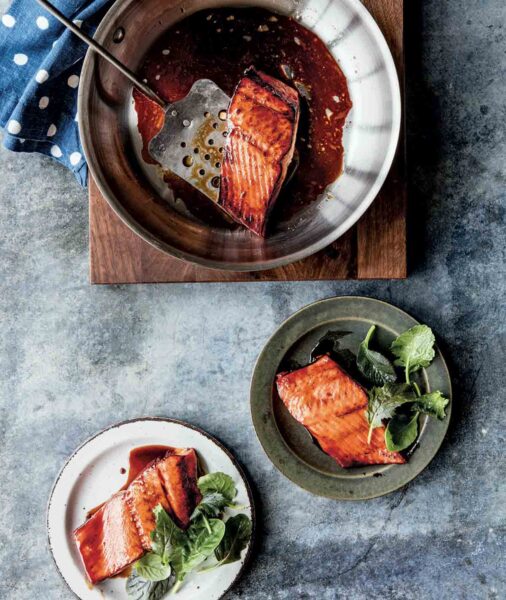
Salmon Teriyaki
Ingredients
- 1/4 cup soy sauce
- 1 tablespoon granulated sugar
- 1 tablespoon mirin
- 1 1/2 teaspoons sake
- Four (6-ounce) skin-on salmon fillets (about 3/4-inch or 18-mm thick)
- 1 tablespoon mild vegetable oil
Instructions
- In a small bowl, stir together the soy sauce, sugar, mirin, and sake until the sugar dissolves.
- Run your fingers over the flesh side of the salmon fillets to check for pin bones, removing them with your fingers, kitchen tweezers, or needle-nose pliers (if you snuck the pliers out of your toolbox in the garage, give them a good cleaning first!). Or, even easier, before your fishmonger wraps up your purchase ask him or her to please remove the pin bones for you.
- Pat the salmon dry with paper towels. Arrange the salmon in a single layer in a smallish baking dish. Pour the marinade over the salmon and turn the fillets to coat them. Cover and refrigerate for 30 minutes.
- Place a large, wide skillet or saucepan on the stove over medium heat and add the oil. When the oil is shimmering but not smoking, carefully remove the fillets from the marinade, allowing any excess to drip off, and place the fillets in the pan, skin side down. Reserve the marinade.
- Cook the salmon until the skin is golden brown and crisp, about 3 minutes. Using a long, thin, flexible spatula, carefully flip the fillets and cook until the top of the salmon is light brown and the middle is slightly translucent for medium-rare, about 2 minutes more. If you notice the glaze on the fillets starting to burn, reduce the heat to medium-low.
- Pour the reserved marinade over the salmon fillets and gently shake the pan to distribute the sauce evenly. Cook until the sauce is reduced to a syrup and the salmon is cooked to the desired degree of doneness, 1 to 2 minutes more if you like it just a little rare in the center of the thickest portion of the fillet.
- Transfer the salmon to individual plates and spoon the sauce over the top. Serve hot, preferably with some rice to soak up that exquisite yet easy pan sauce.

Nutrition
Nutrition information is automatically calculated, so should only be used as an approximation.
Recipe Testers’ Reviews
My oh my, if I had known how easy it was to make homemade teriyaki sauce I would never have that store-bought bottle in my fridge. Making the salmon teriyaki marinade and sauce didn’t even take me 5 minutes.
I marinated the salmon for 30 minutes and cooked it for 3 minutes each side and a further 2 minutes, as instructed in the recipe. I removed the salmon from the pan and it took a further 4 minutes to slightly thicken the sauce. The resulting salmon was delicate and flavorful.
When I make this again I will allow for a longer marinade time to deepen the flavor a bit. I liked the sauce so much that I made a second batch to marinade some sirloin strips for a stir-fry meal later in the week. We had the salmon with asparagus roasted with sesame oil, rice vinegar, and black sesame seeds. A beautiful meal.
This salmon teriyaki was an exceptionally simple way to make an exquisite dish. I have often found that teriyaki anything means an overly sweet, gloppy sauce that drowns out the flavor of the protein. This was not the case here. The sauce is lovely and thickens only enough to lightly glaze the salmon and actually complements the flavor of the salmon rather than overwhelms it.
This will be my go-to teriyaki sauce from now on! For the timing listed in the recipe, this produced salmon cooked exactly how I like it, a little rare in the center on the thickest piece. For those who prefer salmon cooked all the way through, an extra minute might be needed. I served the teriyaki salmon with a quick-pickled cucumber salad.
This teriyaki salmon recipe exemplifies what is at the heart of Japanese food and culture: simplicity. While teriyaki is ubiquitous in America, it’s often overcomplicated with the addition of garlic, ginger, and cornstarch, among other things. The 4 ingredients in this marinade represent true teriyaki and leave the salmon with a perfect glaze and not swimming in sauce. If you can get your hands on some shoyu (Japanese soy sauce), even better.
If you want to try true teriyaki style, this recipe can be done over an open flame. I served this with miso-glazed bok choy, and Japanese cucumber salad.
This Japanese salmon teriyaki recipe is a simple and elegant recipe for salmon. Quick enough for a weeknight dinner, but fancy enough to serve to guests. The glaze is delicately sweet and salty and subtle enough to let the salmon be the star of the dish.
I used low-sodium soy sauce and subbed dry vermouth for the sake. After 30 minutes of marinating, the fillets were ready for the hot pan and 10 minutes after that they were ready for the dinner plate! I let the pan juices reduce for a further minute or two after removing the salmon from the pan and spooned it over the fish.
The salmon turned out just as I like it—still moist and rosy in the center. If you like your fish a little more well done and flaky all the way through, you may want to leave it in the pan for another minute or two. I garnished the salmon with some toasted sesame seeds and finely slivered scallions. Lovely to look at and a delight to eat.
The timing was perfect—3 minutes on the first side crisped the skin, 2 minutes on the second side lightly browned the top of the fillets. After adding the marinade I turned the heat down a little and let the fish cook an additional 2 minutes. The fish was done to my liking at that point so I removed it from the pan and let the sauce reduce for another 2 min until it was syrupy.
This salmon teriyaki recipe is a TC in every respect. It’s very easy to prepare, is full of nutrition, and has great flavor. The recipe works perfectly as written. The salmon was nicely browned on both sides and cooked to perfection using the timing in the recipe. The amount of sauce was just right and helped keep the salmon very moist.
It’s important to keep and eye on the heat so that the sauce doesn’t burn. You don’t need a high or even medium heat to cook the salmon or the sauce—medium-low heat will work best throughout the cooking process.
